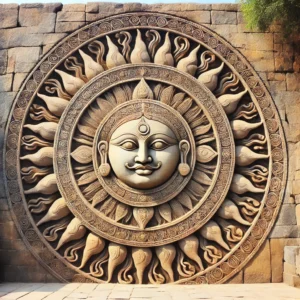
Aurangzeb Versus Marathas
The conflict between Mughal Emperor Aurangzeb and the Marathas was one of the longest and most significant struggles in Indian history. Lasting for 27 years from 1681 to 1707, this war drained the Mughal Empire and ultimately led to its decline. It was a story of fierce battles, strategic moves, and the unwavering spirit of the Marathas.
Origins of the Conflict
Aurangzeb became the Mughal emperor in 1658 after a brutal fight for the throne. Unlike his predecessors, he aimed to bring the entire Deccan region under Mughal control. His strict religious policies, including the reintroduction of the jizya tax in 1679, angered many regional rulers, including the Marathas.
The Marathas had already established themselves as a rising power under Chhatrapati Shivaji. After his death in 1680, his son, Sambhaji, took over and continued resisting Mughal expansion. This set the stage for a long and bitter war.
Major Battles and Events
Raid on Burhanpur (1681)
In January 1681, Sambhaji launched a daring raid on Burhanpur, a key Mughal stronghold in Madhya Pradesh. This attack shocked Aurangzeb and showed how capable the Marathas were in striking deep into enemy territory. In response, Aurangzeb personally led massive military campaigns into the Deccan.
Siege of Bijapur (1686)
By 1686, Aurangzeb focused on eliminating potential Maratha allies. He launched a siege on Bijapur, the last stronghold of the Adil Shahi dynasty. After months of fighting, Bijapur fell to the Mughals, marking a major victory for Aurangzeb in the Deccan.
Fall of Golconda (1687)
The next year, in 1687, Aurangzeb targeted Golconda, ruled by the Qutb Shahi dynasty. Despite fierce resistance, the city fell, strengthening Mughal control over the Deccan. However, these victories were costly, stretching Mughal resources and creating more resistance.
Capture and Execution of Sambhaji (1689)
One of the defining moments of the conflict came in 1689 when Sambhaji was betrayed by his own men and captured near Sangameshwar, Maharashtra. He was presented before Aurangzeb, who gave him a chance to convert to Islam and save his life. Sambhaji refused and was brutally tortured for days before being executed on March 11, 1689. His martyrdom only strengthened Maratha resolve.
Siege of Jinji (1690-1698)
After Sambhaji’s death, his brother Rajaram took charge and shifted the Maratha capital to Jinji in Tamil Nadu. The Mughals laid siege to Jinji in 1690, a battle that lasted for nearly eight years. Even though the fort fell to the Mughals in 1698, Rajaram had already escaped and continued the fight from Maharashtra.
Maratha Guerrilla Warfare (1700s)
By the early 1700s, the Marathas had perfected their guerrilla warfare tactics. They ambushed Mughal forces, cut off supply lines, and recaptured lost territories. Aurangzeb, despite his relentless efforts, could not fully defeat them. His final years were spent moving from one battlefield to another, desperately trying to suppress the rebellion. On March 3, 1707, Aurangzeb died in Ahmednagar, marking the beginning of the Mughal Empire’s collapse.

Impact and Legacy
Aurangzeb’s Deccan campaign was one of the longest military engagements in Indian history. Though he temporarily expanded Mughal rule, his wars drained the empire’s wealth and morale. The Marathas, despite their losses, emerged stronger and eventually established their own empire, dominating India for much of the 18th century.
This struggle was not just about land but about endurance and identity. The Marathas’ ability to survive and resist against overwhelming odds laid the foundation for their rise. Aurangzeb’s failure to crush them exposed the limits of Mughal power. This conflict ultimately reshaped Indian history, leading to the fall of the Mughal Empire and the rise of the Marathas as a dominant force in the subcontinent.






